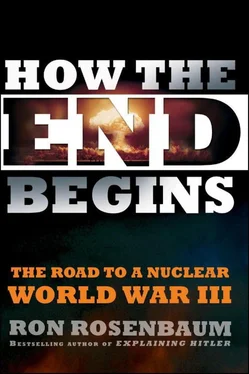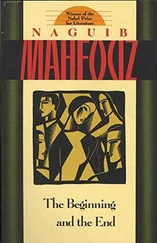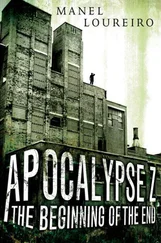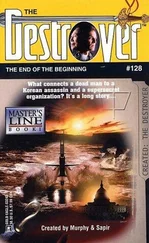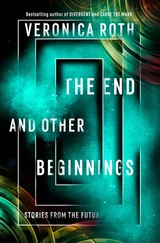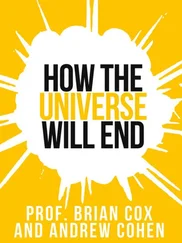“The collapse of the existing nuclear order is a real threat,” he concludes. He doesn’t use the word “grenzsituation.” But that’s what he’s saying in plain English. [195]
That is what Yarynich and Hellman have been trying to say with statistics and equations and echelons. You cannot play with fire too long without getting badly burned, if not entirely immolated.
CHAPTER SEVEN
“THE ASHES ARE STILL WARM”: THE SECOND HOLOCAUST, ISRAEL, AND THE MORALITY OF NUCLEAR RETALIATION
“History teaches us that overreaction is preferable to under-reaction.”
—SHIMON PERES, PRESIDENT OF ISRAEL, MAY 2009 [196]
Anuclear Third World War could begin in a variety of ways, which include calculated preemption, a regional war going global, accident, misperception, inadequate command and control, suicidal martyrdom, a madman’s hubris. But one other factor makes Israel the most likely initial flashpoint: memory.
Back when I was beginning my book about Hitler, I was talking about memory and revenge with my friend Gus, then a lawyer, now a judge; like me a secular, liberal, nonobservant, non-Zionist American-born Jew with no immediate family members murdered in the Holocaust. We were talking about what the appropriate level of feeling toward the perpetrators and the perpetrator nation should be as the Holocaust receded in time. Is the time coming, I wondered, when some kind of forgiveness or at least forgetfulness will supplant the natural desire for retribution?
He looked at me and said, gravely and definitively, “For me, the ashes are still warm.”
It is that kind of memory that makes the phrase “second Holocaust” a powerful strategic factor in nuclear war considerations among Israeli Jews and one that may play an incalculable part in defining how the end will begin.
If we are talking about when and how World War III will begin, then we cannot avoid examining the role that is likely to be played by that highly loaded, inevitably inflammatory and grim phrase “second Holocaust.” A phrase that has gone from tabooed utterance to an increasingly common rubric in the discourse over nuclear war in the second nuclear age. It is a phrase that has become a potential motive, if not a trigger for, the outbreak of World War III in the Middle East.
It means the potential nuclear immolation of the state of Israel and a substantial portion of the nearly six million Jews who live there. It means memory. Memory in the form of awareness among the Jews of Israel that they are being threatened with extermination a second time in six decades. Memory that raises the stakes in the debate over the morality of nuclear retaliation.
The death toll in a second Holocaust may not be as large as that tragically iconic number, six million, with its fearful symmetry with the first. And the source of the first detonation, the outbreak of nuclear war, is not easy to predict. Will it be a missile attack on Tel Aviv, traceable to the state that launched it? Nuclear devices smuggled in by land or sea with “no return address” or even a “false flag” cover making the target of retaliation hard to define with specificity? Or will it be an Israeli nuclear preemption of what their intelligence signals warn is an imminent nuclear attack and the nuclear retaliation that follows?
In the past the Israelis have not hesitated to attack nonnuclear powers who give evidence of seeking to become one—the 1981 attack on the Iraqi reactor at Osirak, the 2007 attack on the Syrian reactor at al-Kibar. Those were long-term threats.
The threat to Israel now posed by Iran is much more immediate: Israeli and American sources have dropped figures that range from months to two years before Iran will have a bomb ready for delivery, 2012–2013 being the most mentioned [197]early and late dates Iran’s Ayatollah Ali Akbar Hashemi Rafsanjani has talked of Iran’s willingness to lose millions of lives in a “nuclear exchange” with Israel for the sacred mission of destroying the Jewish state and bringing upon the apocalyptic return of “the hidden imam” called for in radical Shia eschatology. [198]Curiously, he seems to evince little concern for the nearly one million Arab citizens of Israel who could die in this “nuclear exchange,” since radiation and firestorms don’t discriminate by sect.
The Israeli nuclear arsenal is as many as a hundred times the number of nuclear bombs Iran is likely to have by 2012. But Iran only needs two bombs to destroy the Jewish state depending on their megatonnage. They don’t even have to be launched by long-distance missile, just lobbed across the northern, eastern, or southern border of Israel, by Hezbollah, Fatah, or Hamas, respectively—all groups sworn to destroy the Jewish state. No warning time likely at all.
The attempted Israeli preemption of such an attack could succeed in an overwhelming way. But unless Israel does succeed completely and utterly, unless its preemption destroys all potentially hostile nuclear weapons including those sixty-plus “Islamic bombs” in Pakistan, then it faces a retaliation that could easily destroy it. Just one or two bombs and delivery vehicles need to escape the Israeli attack for retaliation to succeed entirely. Israel, therefore, has virtually no margin of error. Its people are damned if they do preempt, and dead if they don’t. It doesn’t make for a stable situation.
Will there be an Israeli attack before the Iranian bomb goes online? If there is, the fire that keeps the ashes of Hitler’s Holocaust warm will in some way have lit the fuse.
I don’t think it appropriate that I pretend to be dispassionate on this subject, considering my Jewish descent and having spent ten years of my life examining the origin of Hitler’s Holocaust. But let us try to be as analytical as possible and begin with some distinctions, for instance, in the way the second Holocaust will differ from Hitler’s. The Ghost of Holocaust Future resembles the one of the past in its potential death toll carnage and tragedy. But it could be argued the second one transcends the enormity of the first by its very secondness. In which case history, to modify the line from Karl Marx’s Eighteenth Brumaire of Louis Bonaparte, [199]unfolds itself as “first time tragedy, second time even more dreadful tragedy.” That it should happen again to the same people in the space of sixty years is not merely twice as horrifying but exponentially more tragic. As is the notion that the second time will have been a consequence of an attempt to provide refuge for the victims of the first.
A second Holocaust is still a tragedy waiting to happen. But it’s a specter pervasively conjured up, prayed for, on multiple electronic and digital outlets in the landmass surrounding Israel’s sliver of seacoast and desert. Israelis can easily find, on their airwaves or on multiple Web sites, imams throughout the Middle East calling for their extermination.
And to have Hitler smiling on the fulfillment of the process he began! In December 2009, Yale University Press published a remarkable book by the historian Jeffrey Herf. [200]Herf had discovered State Department transcripts of Arabic language broadcasts made in Berlin and broadcast to the Middle East during the Hitler days by Haj-al-Amin Husseni, the Grand Mufti of Jerusalem. [201]He claimed to be a spiritual leader of the Arab peoples, as well as a political leader of the Palestine National Council. The Mufti spent the war years in Berlin (after fleeing the failed pro-Hitler regime he’d helped foist on Iraq), broadcasting to his brethen left behind in the Middle East. They gathered around communal radios to hear what the Mufti believed was a “fusion” of Nazism and Islamism, a fusion characterized by an exterminationist hatred for the Jews. A growing school of historians has come to believe that one powerful source of contemporary exterminationist anti-Semitism in the Middle East was the vast propaganda campaign led by the Nazi-sponsored Mufti. Meanwhile he had Hitler’s ear and—by all accounts—spent the war years urging Hitler to kill more and more Jews, faster and faster until he could get to the ones in the Middle East and exterminate them. “Kill the Jews wherever you find them,” he urged his listeners.
Читать дальше
